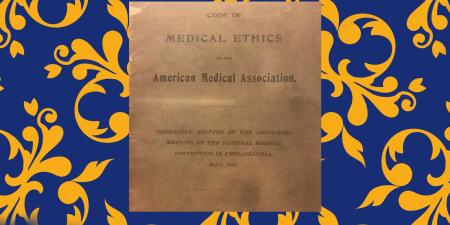Abstract
When physicians admit patients to a hospital, their decisions about where—and to whose professional stewardship and services—those patients belong are influenced by federal policies, of which many clinicians are not aware. The distinction between observation and admission has clinical and ethical implications for patients and practices. The evolution of “observation status” from a clinical tool to a catchall of vague and imprecise meaning has been driven by changes to physician payment and compensation structures, particularly Current Procedural Terminology codes and Centers for Medicare and Medicaid Services regulations, and its current value to clinicians and patients is questionable. This article contextualizes clinicians’ admission and observation practices and considers how metrics influence patient costs and how clinicians and organizations are compensated.
Criteria for Admission
“The patient doesn’t meet criteria for admission. Just put them in obs,” is now commonly suggested by emergency department (ED) clinicians. When we think about where and in whose care patients belong, we consider clinical questions: Does the patient need further workup? Is the problem medical or surgical? Should or can the patient get indicated care as an outpatient? If not, what is an appropriate level of hospital inpatient care? We ask questions like these so that patients receive indicated care, but we still find our practices restricted by nonclinical factors.
Decisions about where and to whom patients belong are heavily driven by regulatory policies we are required to follow without fully understanding. We speak of meeting “criteria” for admission or observation, but our education often does not include the philosophy, rationale, and goals behind these criteria. Yet these policies have a significant impact on our clinical practices, the regulation and reimbursement of our hospitals, our own moral well-being or injury, and the financial well-being of our patients. Understanding the policy background and clinical implications of the rules that govern care delivery allows clinicians to offset their harms and facilitate advocacy efforts for change.
Distinguishing Admission From Observation
When deciding whether a patient in the ED needs admission or observation, we may think of this distinction in terms of the level of care needed. However, observation and admission are often not descriptors of clinical differences but rather status designators of allowable reimbursement, which are codified as Current Procedural Terminology (CPT®) codes and subject to regulation by the Centers for Medicare and Medicaid Services (CMS).1 Admission to inpatient status is only justified—and only compensated—for patients who are expected to need hospital-based care for more than 2 midnights and for whom receiving care in a less intensive setting would pose a risk to their health or well-being.1 Observation under outpatient status is instead indicated for patients who need a shorter period of treatment and assessment to determine the course that their care should take; it allows a period of decision making to determine whether the patient is best served by further inpatient or outpatient care.1
From the perspective of care, there’s often very little difference in these designations. A patient under observation is often on the same inpatient floors, with the same nurses—and often receiving the same care—as an inpatient. For clinicians, the distinction may also often be irrelevant when considering disposition: a patient who needs hospital-based care for a short period is not significantly different from a patient who needs care for longer periods. Financially, however, the implications are significant for both patients and hospitals.
Since observation stays are deemed outpatient, they are governed by Medicare Part B, and the elements of care provided are billed as they would be if the same care were provided to an outpatient.2,3 Each service provided is assigned a value based on its “ambulatory payment classification” within the outpatient prospective payment system.2 Patients are responsible for a copayment for each outpatient service provided, generally 20% of total charges, and must either provide or pay out of pocket for any home medications they may need while in the hospital.3,4 While patients’ copay for each individual service provided must be less than their deductible would be for an inpatient admission, patients can receive multiple services—and thus multiple individual charges—during their stay.3
By contrast, inpatient stays are covered by Medicare Part A and are reimbursed at a fixed rate that is standardized for the patient’s admitting diagnosis and adjusted for relevant comorbidities.2 Payment is issued to hospitals as a single fixed sum regardless of length of stay, and patients are responsible for paying a single deductible for each hospital admission ($1600 for 2023), which also covers any acute posthospitalization nursing care or readmissions for 60 days following admission.3 These different designations are frequently driven not by a patient’s clinical presentation but by pressures imposed by other CMS policies and penalties.
Two Midnights, Utilization Review, and Metrics
In 2013, CMS introduced the 2-midnight rule as disposition policy. Under this rule, patients can only be admitted to a hospital if their physician reasonably expects them to require at least “2 midnights” of inpatient care; shorter expected lengths are called “observation status.”5
This rule undermines the stated role of observation status—to determine if admission is necessary—by aspiring to dictate the appropriate level of care solely by the anticipated length of stay.6 The 2-midnight rule has, anecdotally, resulted in patients with labor-intensive, life-threatening conditions requiring intensive care being placed in observation if their conditions can be expected to resolve quickly.7 Such conditions do not pose a diagnostic dilemma—they clearly require intensive, hospital-based care that cannot be provided as an outpatient. However, while CMS has issued a list of services that can only be provided under inpatient status, many critical medical conditions, such as atrial fibrillation with rapid ventricular response, diabetic ketoacidosis, and flash pulmonary edema, are left off this list.8 These high-intensity, short-stay patients may face exorbitantly high costs from the required 20% copays for multiple outpatient services rendered in a single intensive care unit stay, even as hospitals receive reduced compensation for resource-intensive care that is compensated as though it were provided as outpatient care.
In general, however, when uncertain about a patient’s needed length of stay, hospitals are incentivized to err on the side of observation by the Medicare Fee for Service Recovery Audit Program, which reviews the appropriateness of hospital admissions.9,10 Since hospitals are often not paid at all for an observation-length stay that is incorrectly submitted for reimbursement as an inpatient stay, they are incentivized to begin any potentially short stay as an observation stay to avoid losing the payment altogether.5 However, in actual practice, patients are often kept under observation status for more than 48 hours,11 despite CMS protocols stating that longer observation stays should be rare.1
Hospitals are indirectly pressured to overutilize observation stays not only by the Fee for Service Recovery Audit Program, but also by quality initiatives like the Hospital Readmissions Reduction Program (HRRP), which can reduce a hospital’s reimbursement by up to 3% for all admissions should the hospital fail to meet any readmission metric.12,13 This program, while intended to improve discharge planning and quality of care to reduce readmissions, is of questionable impact. Some studies have suggested that the HRRP has meaningfully reduced readmissions14,15; others have concluded that the reduction in readmissions has been falsely created by changing admissions to observations, which do not count as either an index admission or a readmission.16,17,18,19,20
Disposition and Inequity
There is indirect evidence that the HRRP has contributed to disparities in care and costs for Medicare patients. Significant disparities have been described in admission vs observation decisions, with Black and Hispanic patients being observed more frequently than White patients.21,22 Observation care is also utilized more frequently by Medicare patients with low incomes and in economically disadvantaged neighborhoods.23,24 While some studies have suggested that patients of color may have better outcomes when observed than when admitted,22 the financial and ethical implications of these disparities are significant.
Clinicians should not be forced to choose between breaking the rules or contributing to their patients’ harm.
For most patients with Medicare, an observation stay is less expensive than a short-stay inpatient stay of similar length, but for about 10% of Medicare beneficiaries in 2009, observation stays ended up costing the patient more.25 Hockenberry et al found that observation stays of more than 48 hours were associated with a 42% increase in patient costs,11 and more than 20% of observation stays last for more than 48 hours.26 Furthermore, observation status does not qualify for the 3-day admission requirement for Medicare coverage of skilled nursing facility (SNF) care,27 resulting in high out-of-pocket costs for SNF, lower SNF utilization, and subsequently higher readmission and reobservation rates.24 Each reobservation incurs a separate cost for the patient—even when these reobservations are the result of inadequate care coordination—whereas repeat inpatient hospitalizations confer a single copay per 60-day period.23,28 When observation charges are disproportionately borne by patients with low incomes and patients from economically disadvantaged neighborhoods, their cost is magnified as a percentage of total income and results in patient-led rationing of health care.23
Social Determinants of Disposition
Clinicians are often faced with patients who need more social resources from a system that has fewer to offer—from patients experiencing homelessness needing housing, to geriatric patients needing in-home assistance or long-term placement, to uninsured patients needing complex care coordination. Although these vulnerable populations form a growing (and inescapable) proportion of patients, their special needs are not reflected in CMS regulations.1 Under existing rules, these patients do not meet CMS standards for admission, as the necessary care could be rendered in a less resource-intensive setting.1 However, this rule assumes that less resource-intensive settings exist, are accessible, and have adequate resources for all patients. Clearly, this is not the case. By failing to recognize the social needs, housing and food insecurity, and barriers to outpatient care that plague our patients and our health care system, CMS regulations harm our most vulnerable patients.
Hospitals are ethically bound to provide optimal medical care to their patients and financially penalized for readmissions. However, for many patients, unmet social needs represent the greatest threat to their health.29 Clinicians recognize this reality; they are obligated to protect and promote health but are unable to admit patients who may not be able to access care otherwise and whose health is undermined by social factors they cannot control. These mutually incompatible obligations—to promote health and to follow rules that deny patients care—create moral distress and arguably justify subversion of these rules.
Building a Better Cheater
Although observation status is intended as a clinical decision-making tool, it has become more of an all-purpose loophole to artificially improve hospital metrics and pose barriers to inpatient care. It is widely recognized by clinicians (and explicit in CMS guidelines) that clinician discretion (and creative documentation) can circumvent CMS policies and restrictions to justify an observation or admission stay. Documenting the expectation of a longer length of stay and retroactively explaining why care was shorter might excuse an inpatient admission lasting less than 2 midnights. On the other hand, when a patient without an acute medical diagnosis needs hospital care for social reasons, an unquantified clinical diagnosis of dehydration or ambulatory dysfunction might justify an observation stay. The newly implemented incorporation of social determinants of health in billing metrics can help upsell “soft” admissions and observations.30
But if these rules can (and arguably must) be evaded, it’s worth questioning both their utility and their moral value, as rules that must be broken for the good of the patient should not exist. Clinicians should not be forced to choose between breaking the rules or contributing to their patients’ harm. If noncompliance can be justified with expanded documentation and metrics can be gamed with loopholes and cheats, the rules serve only to increase clinicians’ workloads. If quality improvement initiatives do not generate improved practice but instead harm patients, clinicians, and hospitals, they must be changed.
Solutions
Any solution to working around CMS regulations and CPT codes must take account of the fact that clinicians are notoriously bad at knowing which patients will need more than a 2-midnight stay. Gabayan et al found that 19% of observation patients went on to be admitted and that 22% stayed more than 48 hours.26 One way to reduce the high percentages of observation stays lasting more than 48 hours would be to change the determination of observation vs admission from an up-front guess made at the time of hospital admission to a retroactive designation based on true time spent in the hospital.21 As all of us in health care work toward policy changes, clinicians can advocate for admission of patients with a high probability of needing prolonged care—for example, those with adverse social determinants of health or significant medical comorbidities—rather than erring on the side of observation.11 Hospitals have utilization review teams to correct admissions that result in short stays; patients are far less able to challenge the bill they receive when an inappropriate observation results in a prolonged stay.31 In the face of this power imbalance, our responsibility is to protect our patients.
More broadly, social determinants of health should be incorporated in diagnoses and qualify as broad criteria for admission.30,32 To facilitate access to long-term care, days spent under observation should count towards the 3 days required for SNF coverage.23,28,33 Hospitals should be incentivized to invest in community health initiatives that address social determinants of health, perhaps by eliminating HRRP penalties for hospitals that choose to invest in community infrastructure and primary care.34 While preventable readmissions should be measured, shifting from the stand-alone HRRP to the Hospital Value-Based Purchasing Program (HVBPP), which rewards quality and efficiency of inpatient care more generally35—and expanding the HVBPP to encourage community infrastructure investments as facilitators of value—could maintain quality assessment and improvement without disproportionately burdening hospitals in economically disadvantaged and underserved neighborhoods with financial penalties.36
Correcting the negative impacts of observation status on our patients will be a slow and political process, but our awareness of these issues—and the small ways in which we can help along the way—is essential.
References
-
Centers for Medicare and Medicaid Services. Billing and coding: acute care: inpatient, observation and treatment room services. Medicare Coverage Database. Revised January 1, 2023. Accessed July 14, 2023. https://www.cms.gov/medicare-coverage-database/view/article.aspx?articleId=52985
-
Cassidy A. Health policy brief: the Two-Midnight Rule. Health Affairs. January 22, 2015. Accessed September 11, 2023. https://www.healthaffairs.org/do/10.1377/hpb20150122.963736/full/healthpolicybrief_133-1534168787541.pdf
-
Costs. Medicare.gov. Accessed January 28, 2023. https://www.medicare.gov/basics/costs/medicare-costs
- Ross EA, Bellamy FB. Reducing patient financial liability for hospitalizations: the physician role. J Hosp Med. 2010;5(3):160-162.
-
Fact sheet: Two-Midnight Rule. Centers for Medicare and Medicaid Services. October 30, 2015. Accessed September 11, 2023. https://www.cms.gov/newsroom/fact-sheets/fact-sheet-two-midnight-rule-0
-
Centers for Medicare and Medicaid Services. Hospital services covered under Part B. Medicare Benefit Policy Manual. Centers for Medicare and Medicaid Services; 2020:chap 6. Accessed September 6, 2023. https://www.cms.gov/Regulations-and-Guidance/Guidance/Manuals/Downloads/bp102c06.pdf
-
Gesensway D. What?! This patient should be in observation?!? Today’s Hospitalist blog. August 2013. Accessed January 28, 2023. https://www.todayshospitalist.com/what-this-patient-should-be-in-observation/
-
American Medical Association. Current Procedural Terminology. 4th ed. Centers for Medicare and Medicaid Services. Accessed July 28, 2023. https://www.cms.gov/license/ama?file=/files/zip/2023-nprm-opps-addenda.zip
-
Medicare Fee for Service Recovery Audit Program. Centers for Medicare and Medicaid Services. Updated September 6, 2023. Accessed January 28, 2023. https://www.cms.gov/research-statistics-data-and-systems/monitoring-programs/medicare-ffs-compliance-programs/recovery-audit-program
-
Office of the Inspector General. CMS oversight of the Two-Midnight Rule for inpatient admissions. US Department of Health and Human Services. Accessed January 28, 2023. https://oig.hhs.gov/reports-and-publications/workplan/summary/wp-summary-0000538.asp
- Hockenberry JM, Mutter R, Barrett M, Parlato J, Ross MA. Factors associated with prolonged observation services stays and the impact of long stays on patient cost. Health Serv Res. 2014;49(3):893-909.
-
Hospital Readmissions Reduction Program (HRRP). Centers for Medicare and Medicaid Services. Updated September 6, 2023. Accessed September 12, 2023. https://www.cms.gov/Medicare/medicare-fee-for-service-payment/acuteinpatientPPS/readmissions-reduction-program
-
Boccuti C, Casillas G. Aiming for fewer hospital U-turns: the Medicare Hospital Readmissions Reduction Program. Kaiser Family Foundation. March 10, 2017. Accessed September 12, 2023. https://www.kff.org/medicare/issue-brief/aiming-for-fewer-hospital-u-turns-the-medicare-hospital-readmission-reduction-program/
- Venkatesh AK, Wang C, Ross JS, et al. Hospital use of observation stays: cross-sectional study of the impact on readmission rates. Med Care. 2016;54(12):1070-1077.
- Zuckerman RB, Sheingold SH, Orav EJ, Ruhter J, Epstein AM. Readmissions, observation, and the hospital readmissions reduction program. New Engl J Med. 2016;374(16):1543-1551.
- Ody C, Msall L, Dafny LS, Grabowski DC, Cutler DM. Decreases in readmissions credited to Medicare’s program to reduce hospital readmissions have been overstated. Health Aff (Millwood). 2019;38(1):36-43.
-
Sabbatini AK, Joynt-Maddox KE, Liao JM, et al. Accounting for the growth of observation stays in the assessment of Medicare’s hospital readmissions reduction program. JAMA Netw Open. 2022;5(11):e2242587.
- Sabbatini AK, Wright B. Excluding observation stays from readmission rates—what quality measures are missing. New Engl J Med. 2018;378(22):2062-2065.
- Ziedan E, Kaestner R. Did the Hospital Readmissions Reduction Program reduce readmissions? An assessment of prior evidence and new estimates. Eval Rev. 2021;45(6):359-411.
-
Himmelstein D, Woolhandler S. Quality improvement: “become good at cheating and you never need to become good at anything else.” Health Affairs Forefront. August 27, 2015. Accessed September 6, 2023. https://www.healthaffairs.org/content/forefront/quality-improvement-become-good-cheating-and-you-never-need-become-good-anything-else
-
Cichowitz C, Loevinsohn G, Klein EY, et al. Racial and ethnic disparities in hospital observation in Maryland. Am J Emerg Med. 2021;46:532-538.
- Wright B, Zhang X, Rahman M, Abir M, Ayyagari P, Kocher KE. Evidence of racial and geographic disparities in the use of Medicare observation stays and subsequent patient outcomes relative to short-stay hospitalizations. Health Equity. 2018;2(1):45-54.
- Goldstein JN, Zhang Z, Schwartz JS, Hicks LS. Observation status, poverty, and high financial liability among medicare beneficiaries. Am J Med. 2018;131(1):101.e9-101.e15.
- Sheehy AM, Powell WR, Kaiksow FA, et al. Thirty-day re-observation, chronic re-observation, and neighborhood disadvantage. Mayo Clin Proc. 2020;95(12):2644-2654.
-
Lind KD, Noel-Miller CM, Zhao L, Schur C. Observation status: financial implications for Medicare beneficiaries. AARP Public Policy Institute; 2015. Accessed January 28, 2023. https://www.aarp.org/content/dam/aarp/ppi/2015/Hosp%20Obs%20Financial%20Impact%20Paper.pdf
-
Gabayan GZ, Doyle B, Liang LJ, Donkor K, Huang DYC, Sarkisian CA. Who has an unsuccessful observation care stay? Healthcare (Basel). 2018;6(4):138.
-
Medicare Learning Network. MLN fact sheet: skilled nursing facility 3-day rule billing. Centers for Medicare and Medicaid Services; 2023. Accessed September 6, 2023. https://www.cms.gov/files/document/skilled-nursing-facility-3-day-rule-billing.pdf
- Rahman M, Meyers DJ, Wright B. Unintended consequences of observation stay use may disproportionately burden medicare beneficiaries in disadvantaged neighborhoods. Mayo Clin Proc. 2020;95(12):2589-2591.
- Hood CM, Gennuso KP, Swain GR, Catlin BB. County Health Rankings: relationships between determinant factors and health outcomes. Am J Prev Med. 2016;50(2):129-135.
-
Centers for Medicare and Medicaid Services; National Center for Health Statistics. ICD-10-CM Official Guidelines for Coding and Reporting, FY 2023. Centers for Medicare and Medicaid Services; 2023. Accessed January 28, 2023. https://www.cms.gov/files/document/fy-2023-icd-10-cm-coding-guidelines-updated-01/11/2023.pdf
-
Alexander v Azar, 613 F Supp 3d 559 (D Conn 2020).
- Sheehy AM, Locke CFS, Bonk N, Hirsch RL, Powell WR. Health care policy that relies on poor measurement is ineffective: lessons from the hospital readmissions reduction program. Health Serv Res. 2023;58(3):549-553.
-
Office of Inspector General. Vulnerabilities remain under Medicare’s 2-midnight hospital policy. US Department of Health and Human Services; 2016. OEI-02-15-00020. Accessed September 6, 2023. https://oig.hhs.gov/oei/reports/oei-02-15-00020.pdf
- Graham KL, Auerbach AD, Schnipper JL, et al. Preventability of early versus late hospital readmissions in a national cohort of general medicine patients. Ann Intern Med. 2018;168(11):766-774.
-
Hospital Value-Based Purchasing Program. Centers for Medicare and Medicaid Services. Updated September 6, 2023. Accessed May 19, 2023. https://www.cms.gov/medicare/quality-initiatives-patient-assessment-instruments/hospitalqualityinits/hospital-value-based-purchasing-
-
Cram P, Wachter RM, Landon BE. Readmission reduction as a hospital quality measure: time to move on to more pressing concerns? JAMA. 2022;328(16):1589-1590.



